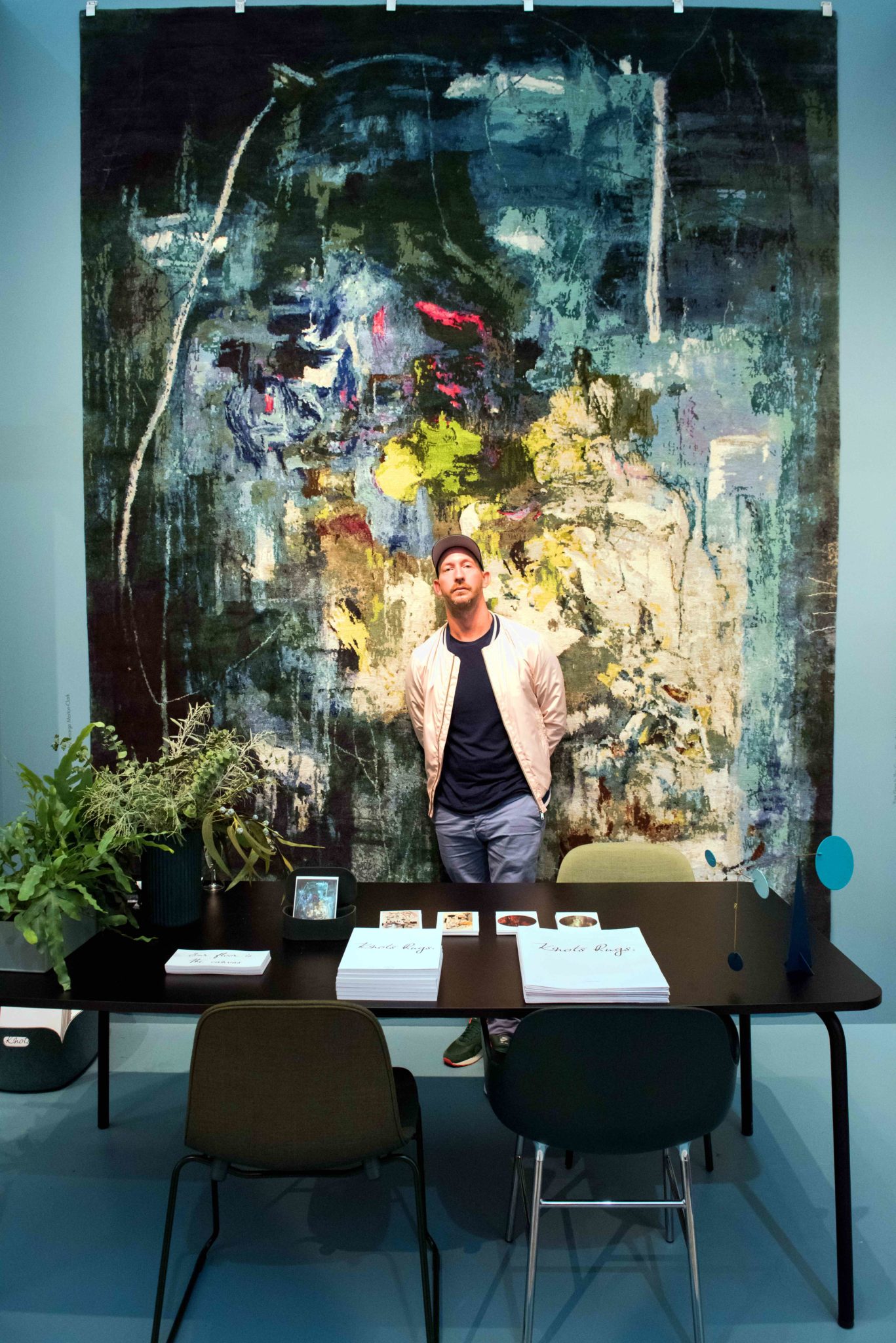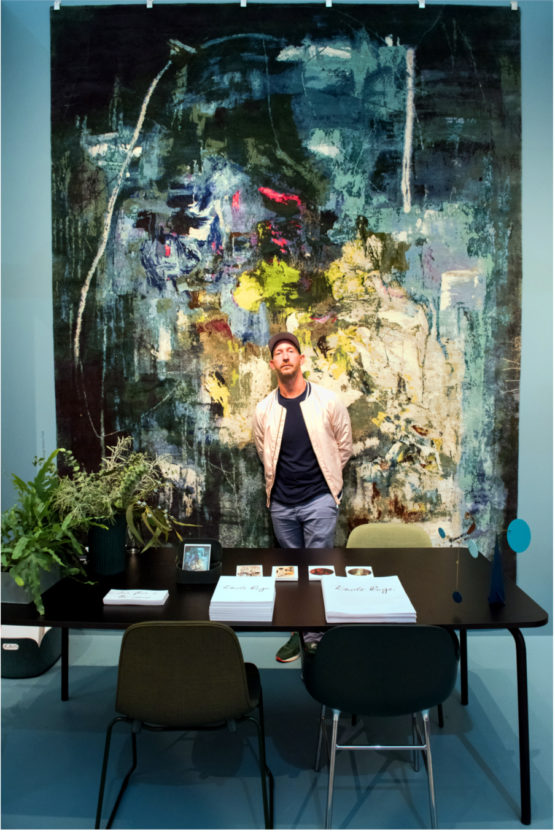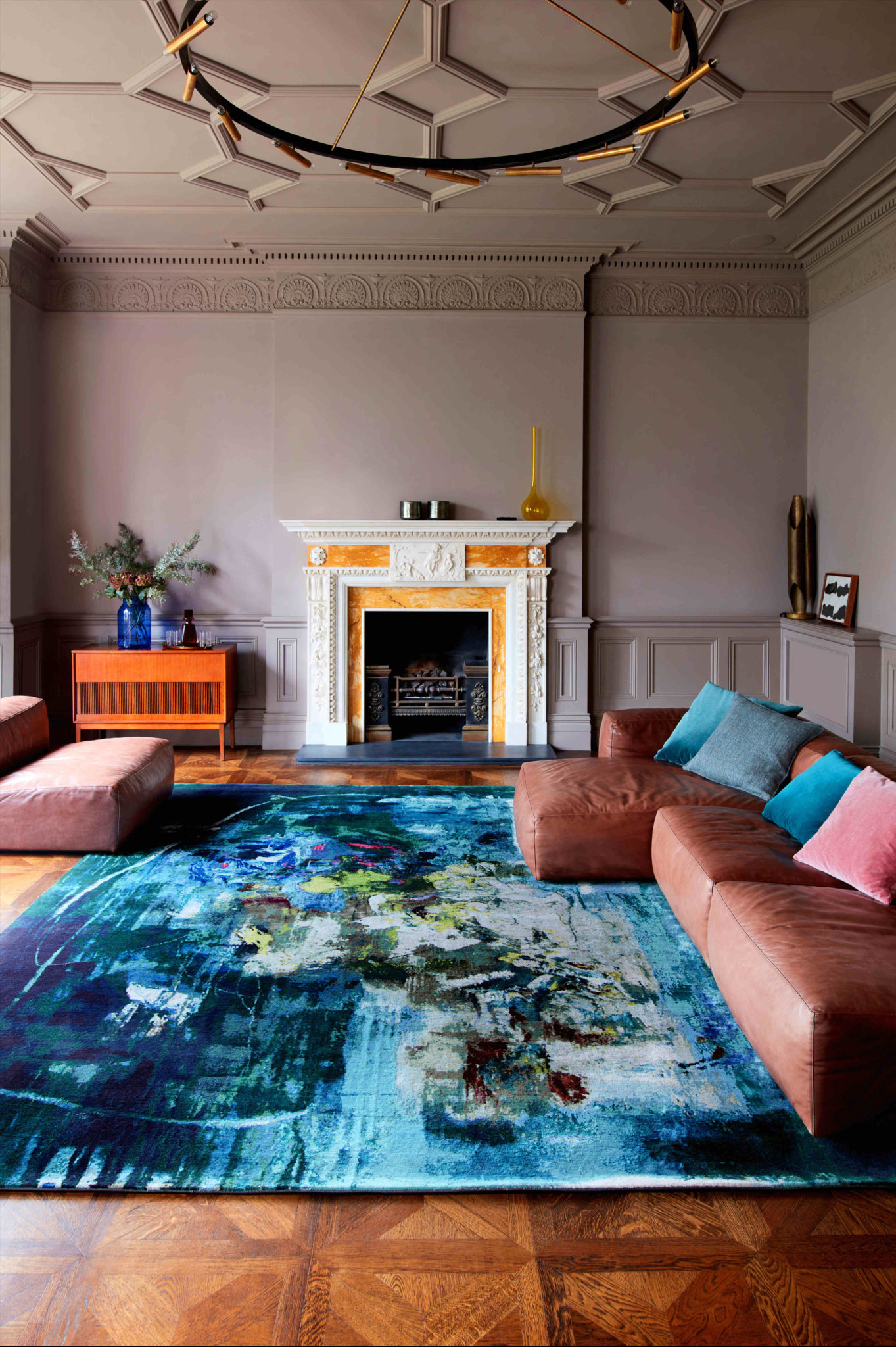Knots rugs
Knots Rugs in Chelsea, London are collaborating with me on a 4meter x 3meter rug due out in September. The high end rug specialists approached me with an idea about taking three artists and making their artwork into extremely beautiful rugs.
The rugs which take up to nine months to make go through an extremely thorough process (as seen below, lifted from Knots Rugs website).
The rugs will have different textures just as my paintings do. I love the fact that you will be able to feel/touch the different textures that will be represented on the rug. For example the Impasto will be double knotted and raised.

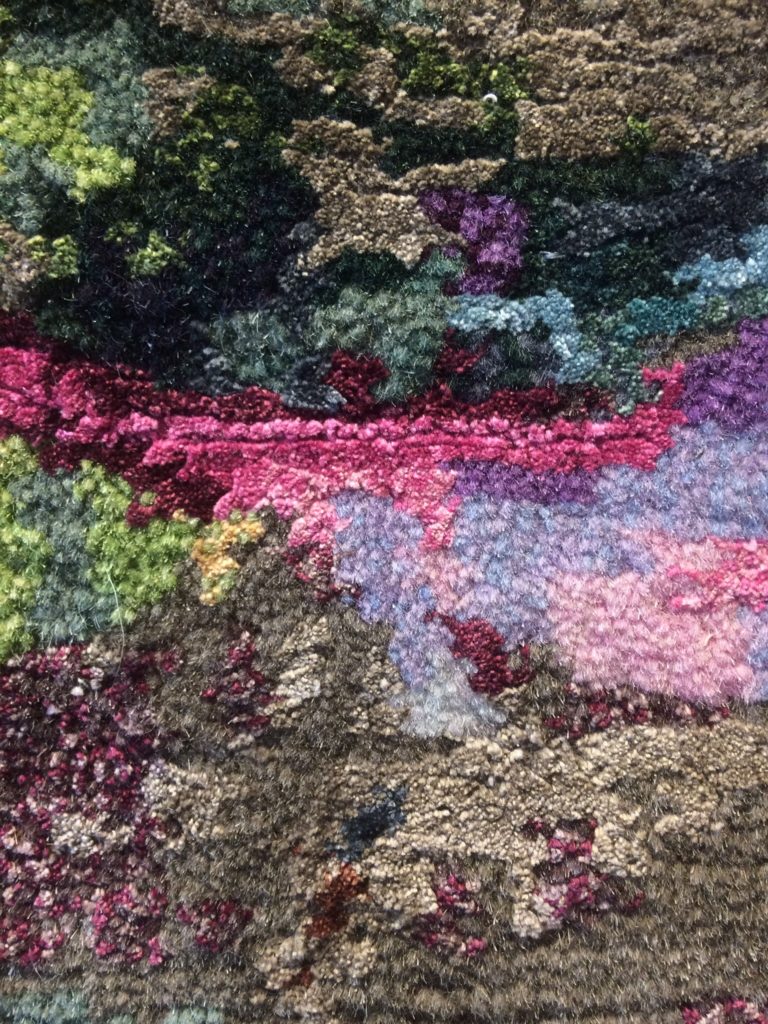

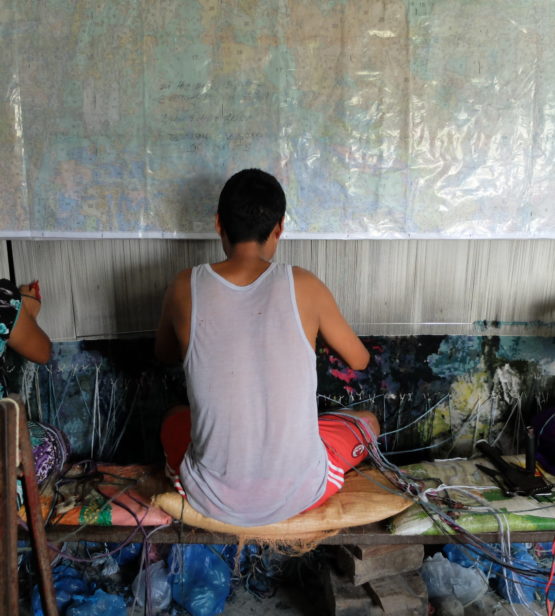
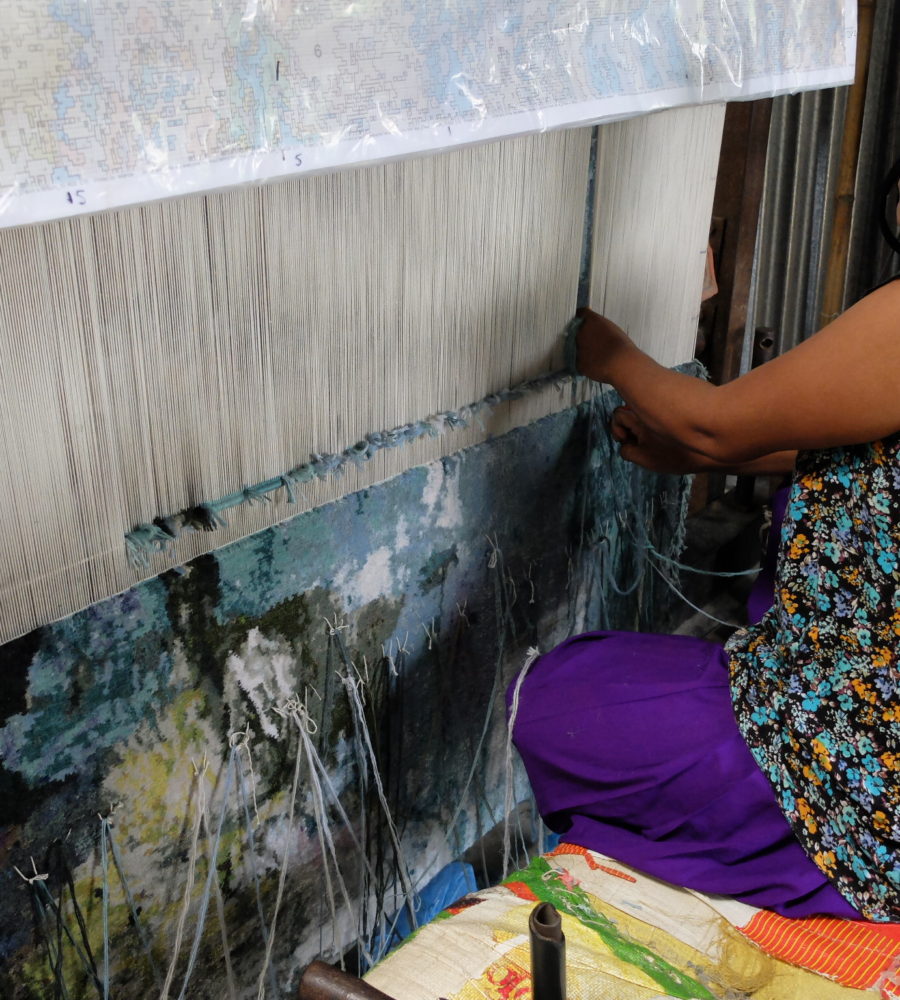
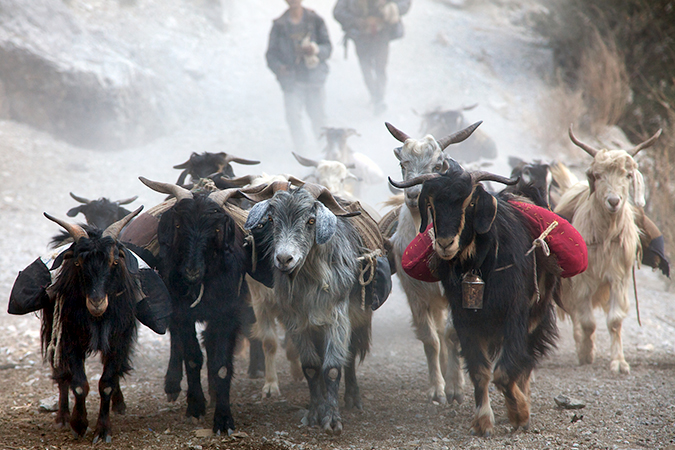
The Wool
The wool used in our rugs comes from Tibetan Highland Sheep, which is one of the best quality wools on the market. Highland Tibetan wool is high in fat, otherwise known as lanolin. The high Lanolin content in their coats is used for protection against the elements and once transformed into a hand woven rug the Lanolin also protects against staining in the finished article.
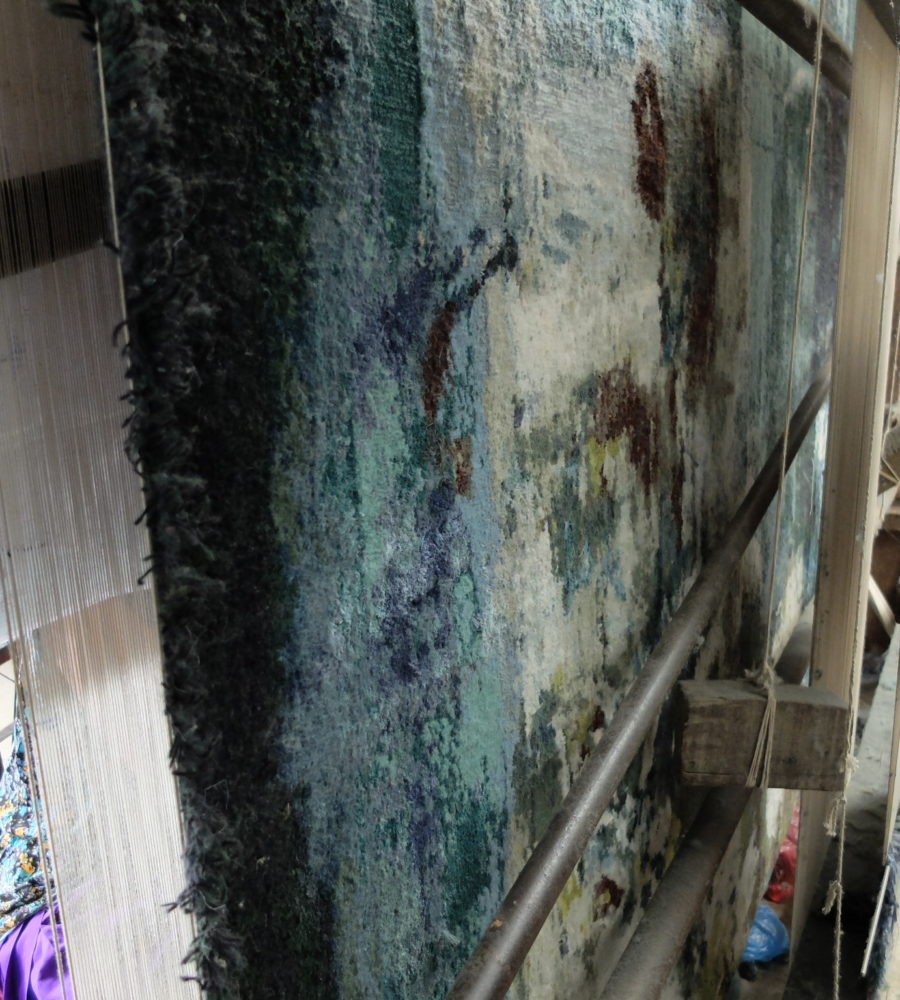
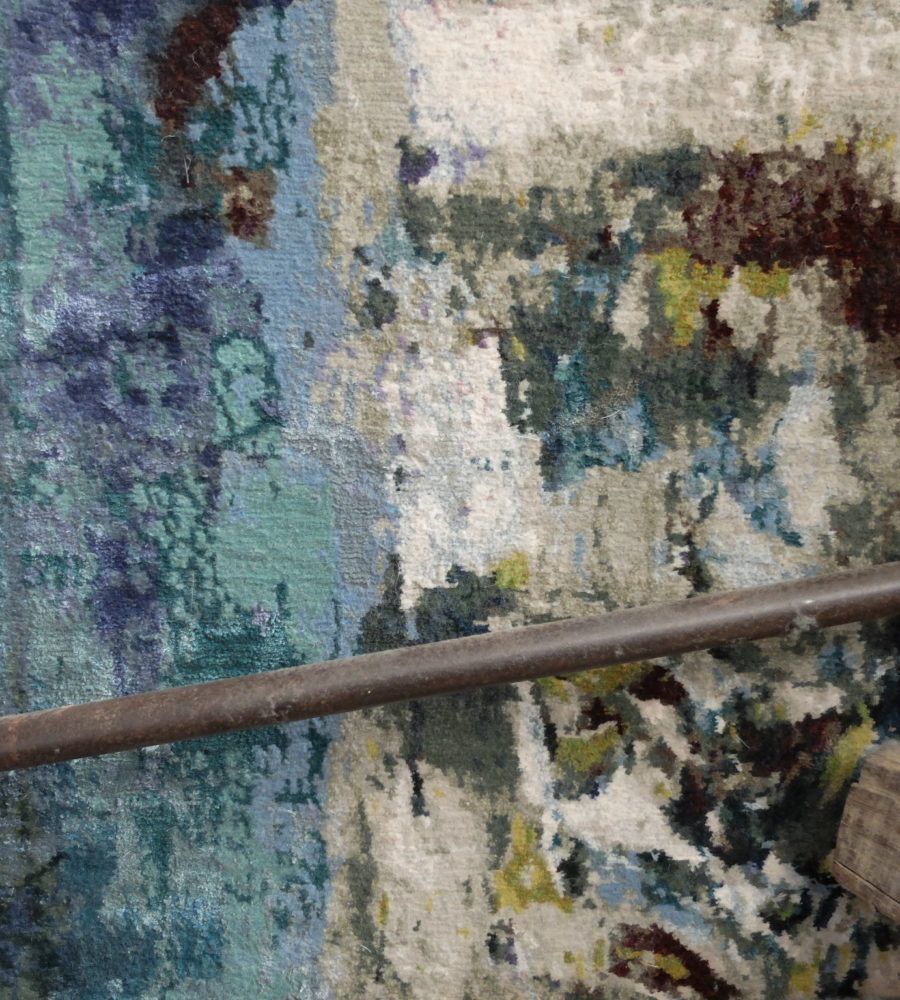
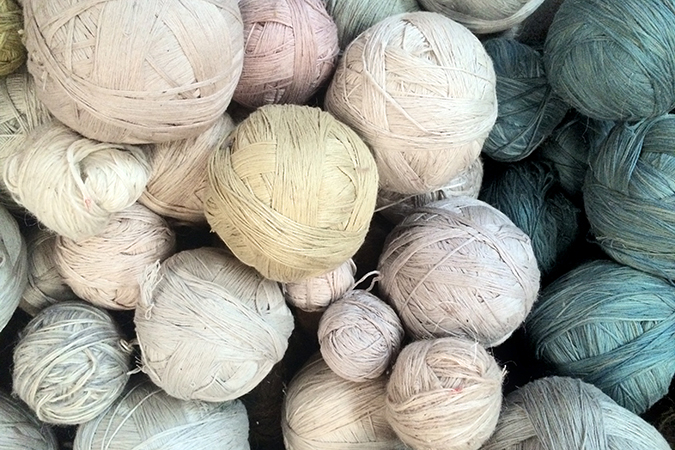
Other Fibres
Other materials we use are Chinese silk and nettle. Nettle grows in abundance in Nepal and once processed becomes a lovey fibre with unique qualities. It has a subtle shine and also creates a mottled effect when used in its un-dyed form.

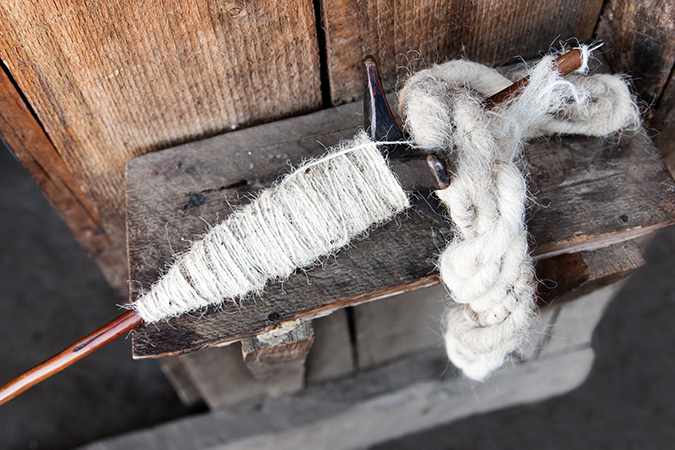
Hand-Carding
Hand carding is a vital step in the production process because it transforms the raw wool into yarn that is ready to be spun. The process of hand carding involves de-tangling the raw wool by teasing it back and forth between two paddles. These paddles have small metal spikes on one side, which act as a brush, working through the tangles to filter out any thorns or grasses, which may have become attached from before the sheep were sheared.
Hand-Carding
Hand carding is a vital step in the production process because it transforms the raw wool into yarn that is ready to be spun. The process of hand carding involves de-tangling the raw wool by teasing it back and forth between two paddles. These paddles have small metal spikes on one side, which act as a brush, working through the tangles to filter out any thorns or grasses, which may have become attached from before the sheep were sheared.

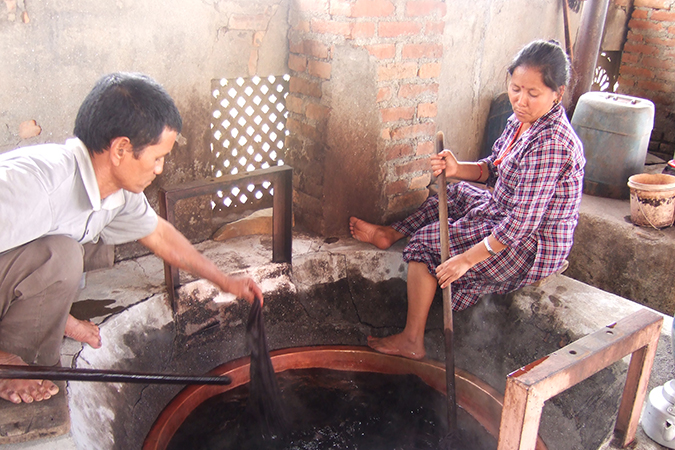
Dyes
Traditionally, the dyes used to create Tibetan rugs are acquired naturally through herbal plants, however nowadays with the advancements of technology and logistics; many dyes made from other substances are available. At Knots we use the ARS colour system and also some natural dyes.
Dyeing Process
Pot dyeing is a long established and traditional method of dyeing used to dye the yarn to make our rugs. The yarn is placed into a large pot filled with boiling water with the specific amount of dye added for the specific colour. The yarn is constantly turned on a wheel to ensure that the colour has effectively permeated the wool and is also consistent however a natural abrash will occur due to this process. Once the dyeing process is complete, the yarn is then left to dry naturally on top of the roofs. There are also modern forms of dying in Nepal that are less labour intensive.

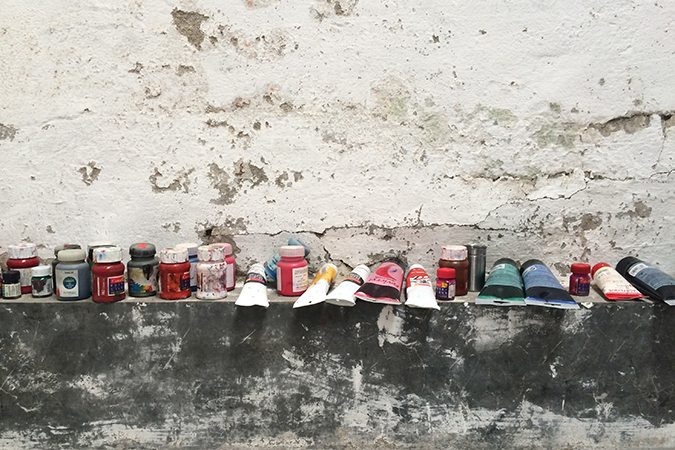
Graphs
When an idea for a rug is developed, the artwork is then sent to Nepal as a digital image, drawing or photograph. The designers will create a CAD for approval, once approved the graphs are made to scale.
Making The Graph
The final graph is the template used by the weavers. This gives a detailed account knot by knot of the correct colour and design for them to follow. Graphs can be hand painted or computer generated all depending on what the design needs.

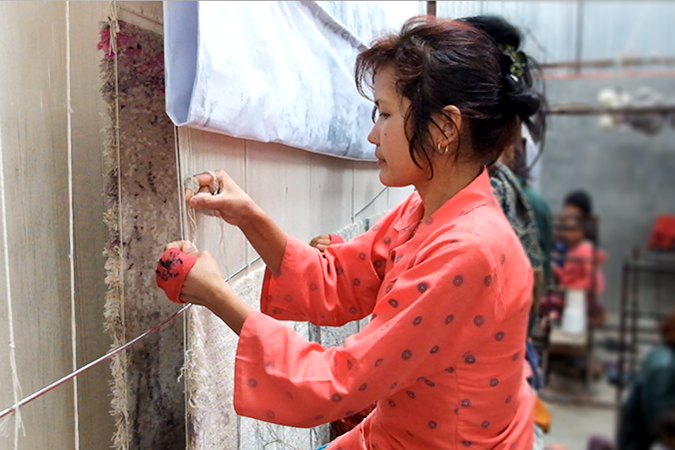
Looms
All our rugs are hand knotted on looms. A loom is normally constructed of a metal frame that is strung with thin cotton threads to create a tension for the warp threads to be woven through it. The loom threads are the structure of the carpet.
Hand-Knotting
There are three commonly used forms of knotting, in hand woven carpets Tibetan, Persian and Turkish knotting. We use Tibetan knotting in most of our collections except for our Jaipur collection, which is a Persian Weave. Tibetan knotting is made using a rod. The rod used determines the pile height of the finished carpet. The rod is placed through the width of the carpet and the weft is woven through it around two warp threads at a time. Once a line has been woven the part is bashed down and then cut, then the process is started again using the graph as a guide.

Washing And Stretching
It is essential to wash a rug after it is woven for various reasons. One is to ensure that the dyes have truly bound to the yarn and is colour fast. Another is to wash out any dust or dirt that may have become knotted in with the yarn when making the rug. Once washed, the rug is stretched out, by being stitched onto a metal frame, as the washing process causes shrinkage and this usually takes 3 to 5 days.
Finishing
Once dried, the rug is then hand clipped with special scissors with 16-18 inch blades to contour between colours which gives each rug character and a three dimensional effect. Once all the loose ends are tied- or clipped- the rug is shipped to our showroom where they are put on display for the world to enjoy.
